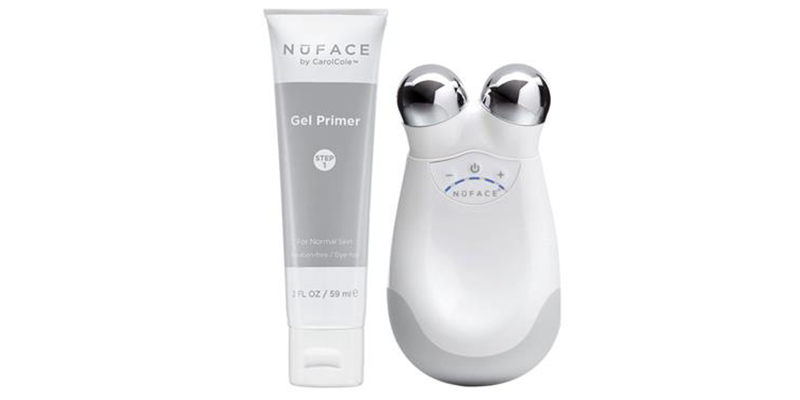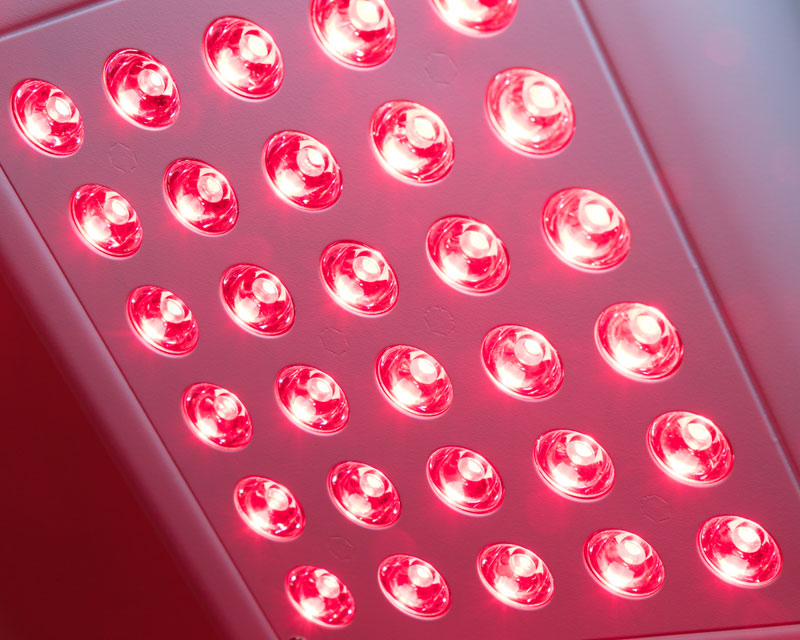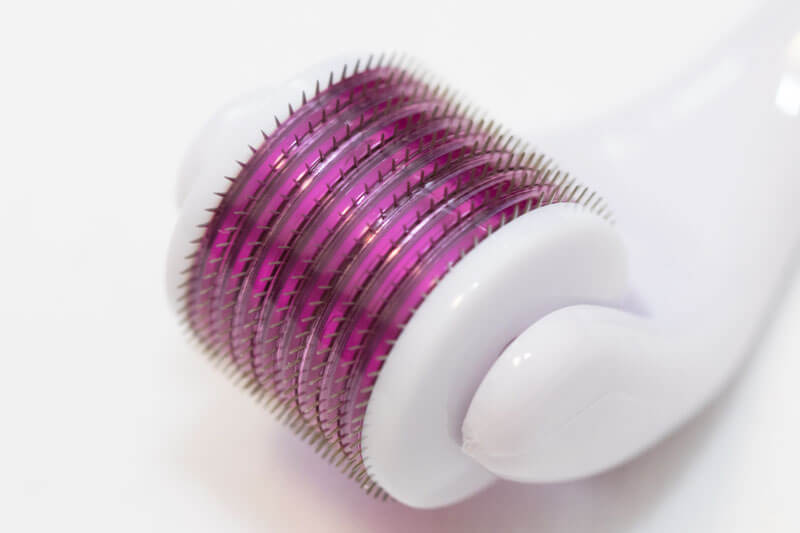Sometimes, no matter how many amazing products we use, we still look at our skin and aren’t happy with the results. We think, “What else can I add to my routine to take it to the next level? To really see results?” That’s where at-home devices come in! You can get the benefits of in-office treatments without leaving your home which is the ideal scenario for everyone. But with the cost of these devices usually being over $100, you’re probably wondering if they’re actually worth the money. Let’s investigate.
Microcurrent Devices

Most of the time, science is science. Something either signals or gets through the skin or it doesn’t. Something either binds to a receptor and stimulates a response or it doesn’t. It’s pretty simple. But there are a few cases in skin care I have seen where results really do depend on the individual.
That is the case with popular microcurrent skin care devices, such as the NuFace Trinity Facial Kit ($325) or the NuFACE Trinity Mini ($199). The device is the first FDA-cleared at-home, handheld device for facial stimulation. Studies support that microcurrent works for fine lines, wrinkles, and overall skin firmness. One study shows a reduction in wrinkles of 7.61 – 18.37% after the first microcurrent treatment, and 5.85-21.18% after the second (Life Science Journal). In a recent clinical study conducted by NuFace, 85% of clinical study users experienced significant improvements in facial contour, 80% of clinical study users said their face felt more toned, and 73% of clinical study users experienced significant improvements in skin tone (NuFace).
Going back to the Life Science Journal study, there’s a reduction in wrinkles of 7.61 – 18.37% after the first treatment, and 5.85 – 21.18% after the second. That’s a big difference! Let’s say you and your friend each use the NuFace Trinity Facial Kit and compare results: You could have just a 5 – 7% difference in your fine lines and wrinkles, whereas hers could be reduced by over 20%. That’s nearly four times the results. Granted, I know all treatments have some range, but I’ve noticed more of a profound difference in efficacy between individuals with microcurrents than any other treatments I’ve reviewed to date. In other words, give the NuFace Trinity Facial Kit a try, but there’s no guarantee you’ll fall into the higher-efficacy group.
LED Devices

I think at-home red light photofacials are one of the least-discussed secrets of anti-aging. Red LED phototherapy has been used in dermatologists’ offices since the early 2000’s. Targeted rays of red light, developed at specific nanometer wavelengths, achieve different levels of penetration and absorption through the skin. Red LED phototherapy has been shown in independent studies to repair sun damage, increase collagen and elastin production, and increase skin firmness over time (Journal of Photochemistry and Photobiology). This is at least in part due to the fact that LED phototherapy has been shown to increase cellular metabolism, which may in turn increase cell turnover and the efficacy of your topically-applied anti-aging ingredients.
Phototherapy also has less potential side effects than lasers. In fact, while lasers are contraindicated in many patients with darker skin (i.e., those of African, Middle Eastern, Hispanic, Indian, South Asian descent), LED phototherapy is generally considered safe for darker skin tones.
In short, I’m a huge fan — unless you’re super skinny to begin with. The red LED technology used in many fat-reduction therapies (Journal of Cosmetic and Laser Therapies) is virtually the same as those used in red LED facial treatments. So if you’re concerned about signs of aging such as hollowed-out cheeks or undereye area or gaunt-looking features, I absolutely do NOT recommend LED devices. Instead, think about other collagen-stimulating treatments, like retinoids, CO2 lasers, a chemical peel, or even microneedling (see below).
Microneedle

Microneedling works by creating micro-channels in the skin which act as pathways to help increase absorption rates of serums and active ingredients.
Medical grade rollers can penetrate through the epidermis and into the upper dermis, just below the dermal-epidermal junction (DEJ) and just above the capillaries and nerve endings, so no pain or blood is involved. Therefore, medical grade rollers help with product penetration and stimulate the formation of new collagen and help increase skin thickness. The human epidermis has an average thickness of 1.5mm and thus medical grade rollers typically use needles ranging from .15mm to 1.5mm and not longer.
Home use rollers, however, only penetrate the epidermis and therefore can only be used to enhance product penetration at home. These rollers have needles that are typically 0.2mm – 0.3mm in length and barely visible to the naked eye. However, the home use rollers seem to come with A LOT of safety precautions and usage instructions, which makes me think it is better to consult with a medical professional before you purchase one!
The FDA has yet to set specific micro-needling standards, but manufacturers like Dermaroller® are assisting the FDA in establishing micro needling standards. Furthermore, as a Class I Medical Device, all medical microneedling devices are required to be registered with the FDA. However, there is no FDA Approval to be had with these devices so if you see one advertised as “FDA Approved” or “FDA Certified” it’s likely fraudulent.
There are many copycat devices available for sale on internet sites, particularly less reputable online sites from abroad. Often these include the sale of medical rollers which should NOT be used at home due to the potential for injury and the risk of infection if the proper aseptic precautions are not followed.
I strongly recommend that consumers visit their dermatologist or plastic surgeon for microneedling treatments, and for appropriate home care programs. Consumers must be sure to seek out practitioners who can demonstrate proper training credentials and experience for medical microneedling treatments.
Bottom Line
While doing treatments in the comfort of your own home is ideal for most people, they are typically not as effective. And with many at-home devices costing well over $100 you’re better off going to a board-certified dermatologist. The only exception to this being red light photofacials, if you’re not super thin (otherwise these treatments can make your face look gaunt over time). However, these red LED treatments can be highly beneficial when done in conjunction with your regular routine.

